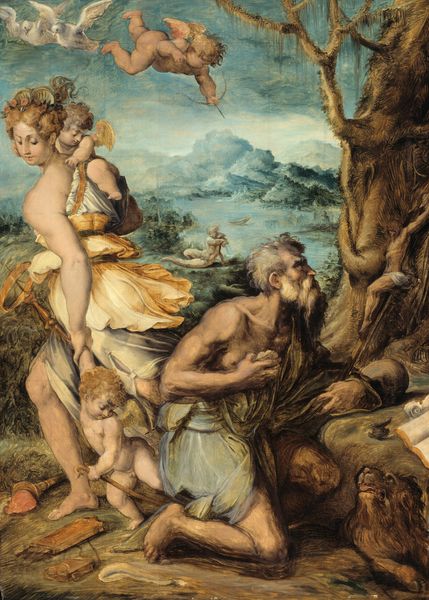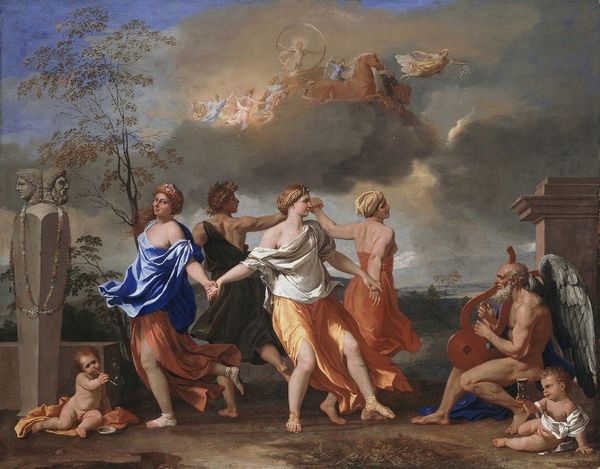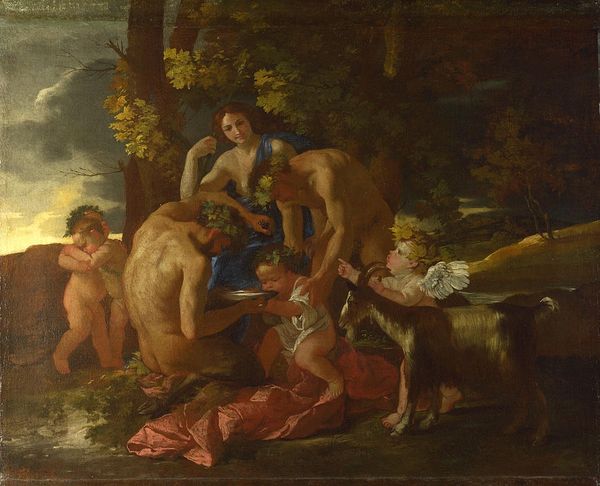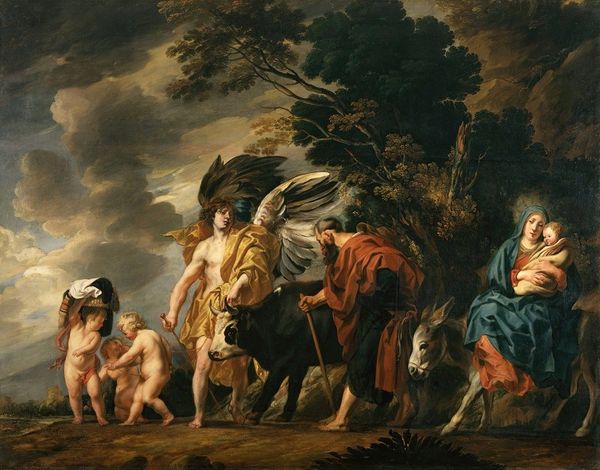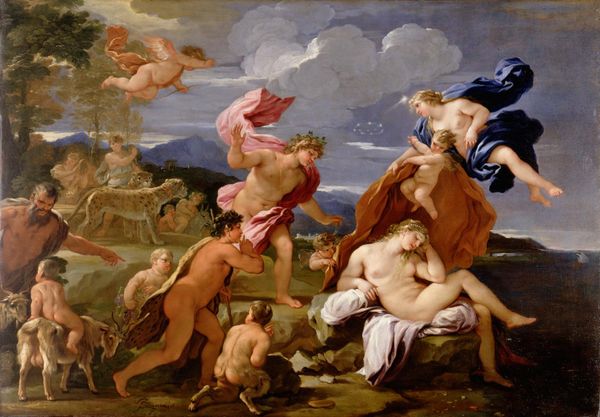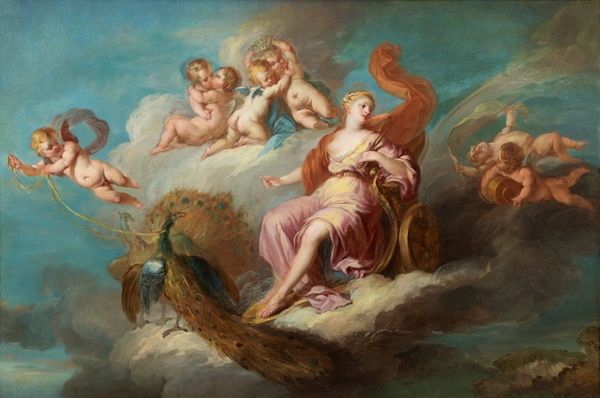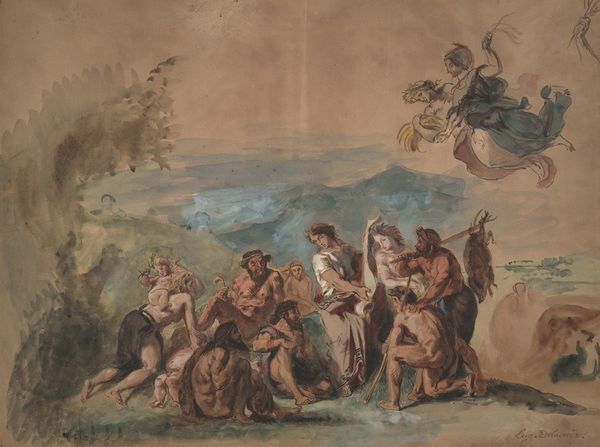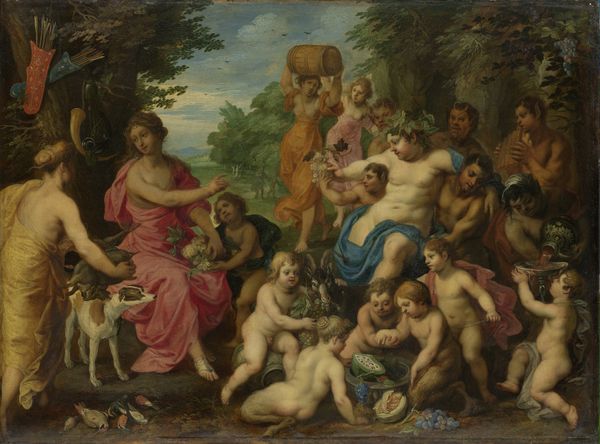
painting, oil-paint
#
high-renaissance
#
venetian-painting
#
allegory
#
painting
#
oil-paint
#
painted
#
oil painting
#
underpainting
#
mythology
#
nude
Copyright: Public Domain: Artvee
Editor: Paolo Veronese’s “Rape of Europa,” painted in the 1580s with oil paint, has such a surprisingly cheerful feel, considering the subject matter. What historical factors might explain this vibrant take on a violent myth? Curator: Well, think about the function of mythological paintings in the 16th century. Often, they served as allegories, sometimes even justifications, for political power and dynastic ambitions. The "rape," or rather abduction, of Europa by Zeus, could be seen as a divine founding myth, a seeding of new lineage and authority. It is less about sexual violence and more about the origins of power. How do you see the portrayal of the female figures influencing this interpretation? Editor: It is true they don’t seem terrified. They almost look like they are enjoying a day at the beach. Perhaps the painting flatters the ruling classes through an accepted narrative? Curator: Precisely. And Veronese, as a Venetian painter, was deeply embedded in a culture of pageantry and display. The sumptuous fabrics, the idealized beauty, and the overall sense of abundance, speak to Venice's self-image as a center of wealth and culture, a new Rome. The painting then becomes an aspirational vision for those with power. Does knowing this shift your perception of the painting’s purpose? Editor: It does. I thought it was strange that the artist made this subject look beautiful, almost peaceful. It seems it was less a matter of aesthetic taste, and more about social function. Curator: Exactly, and paintings like these can also teach us how historical contexts can dramatically shift the meaning and impact of visual imagery. Editor: I’ve certainly learned to look past face value and consider a work’s potential social role.
Comments
No comments
Be the first to comment and join the conversation on the ultimate creative platform.


